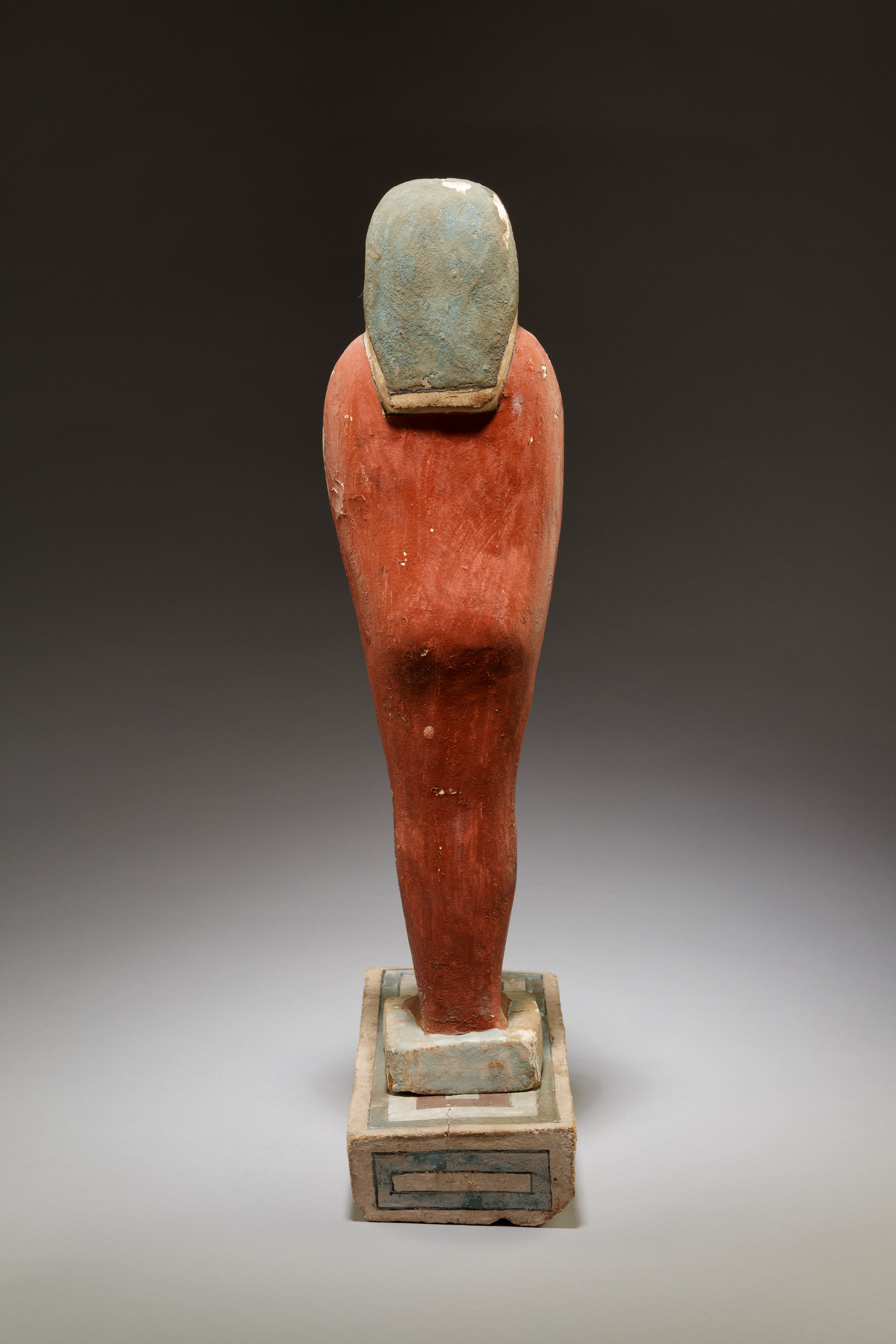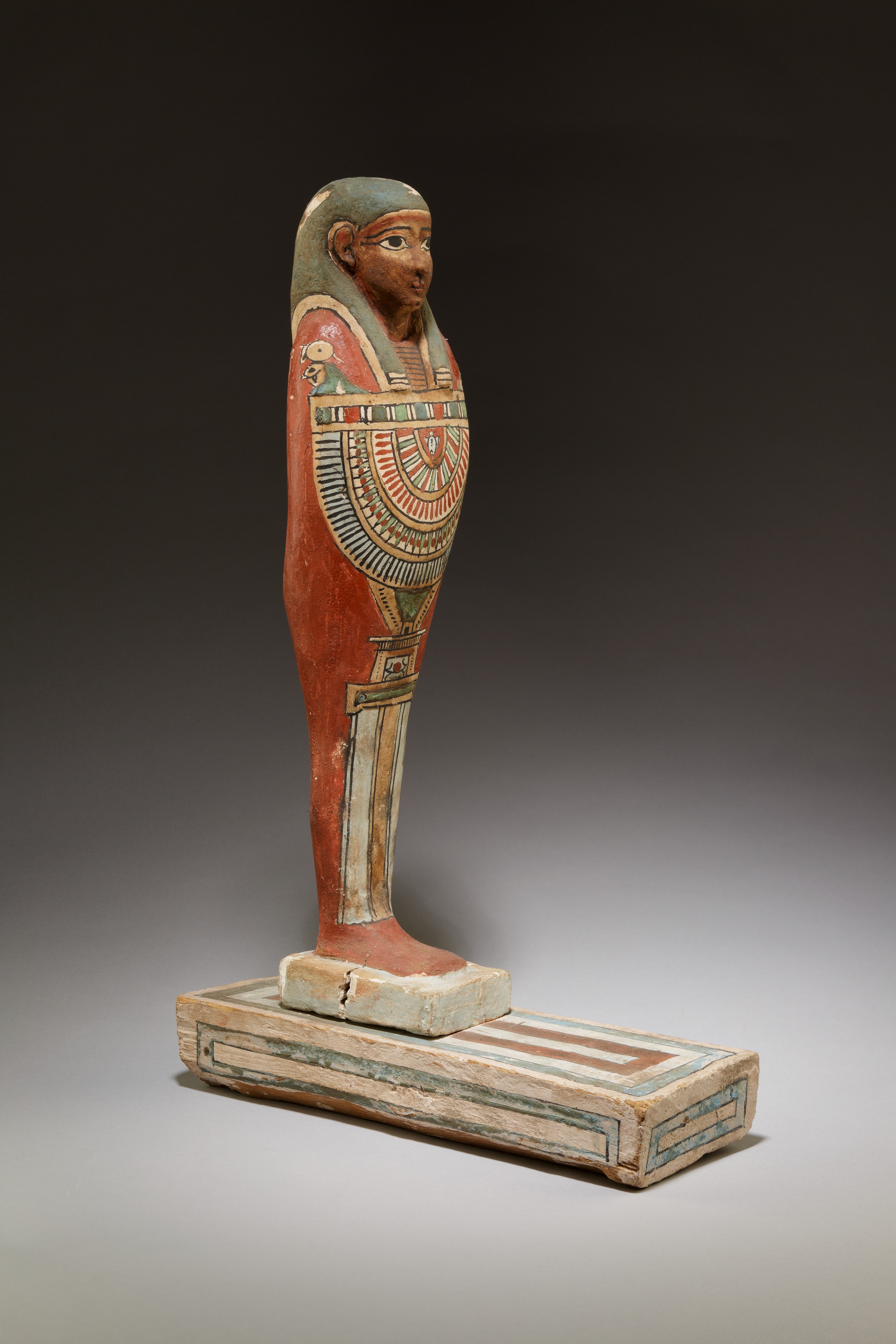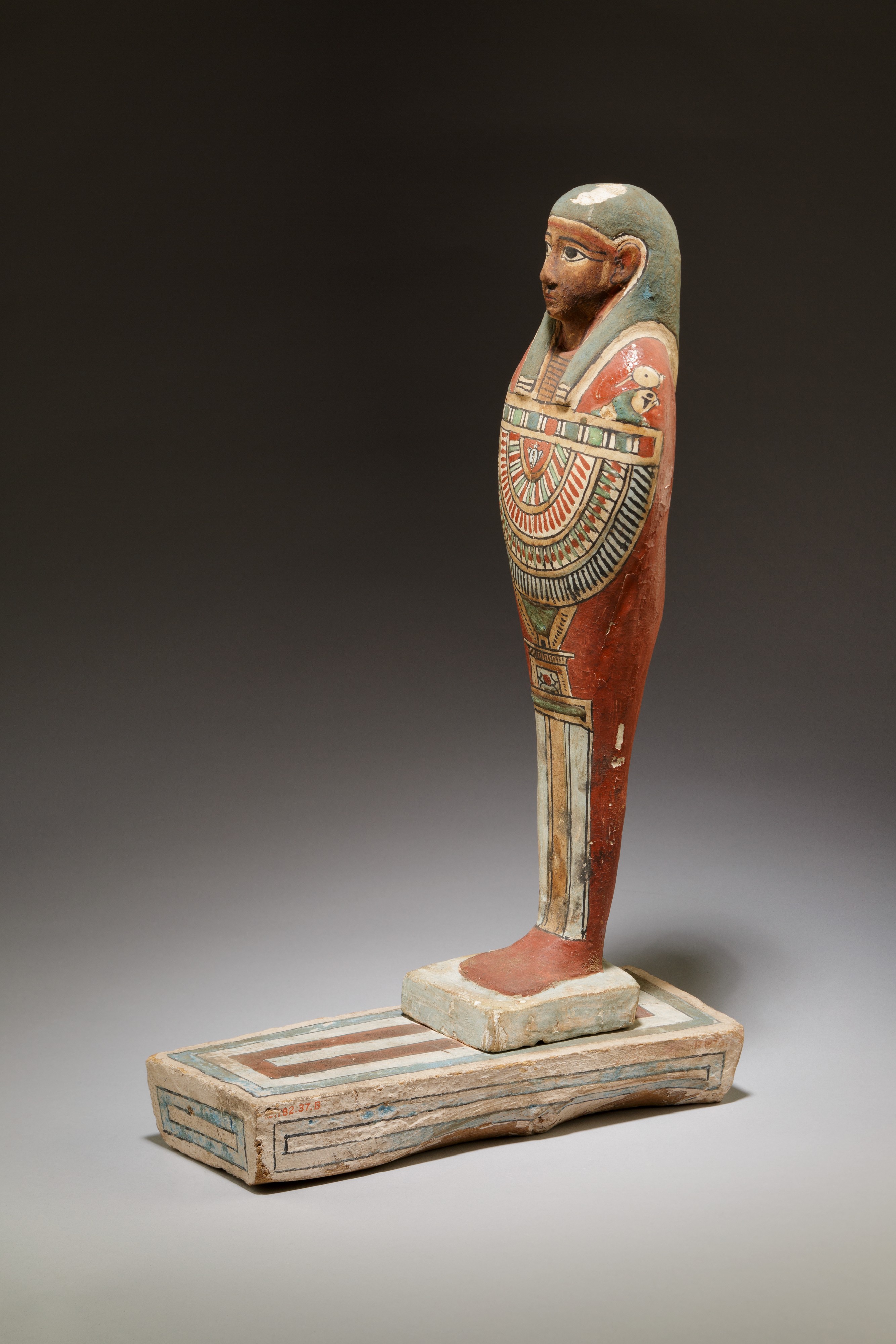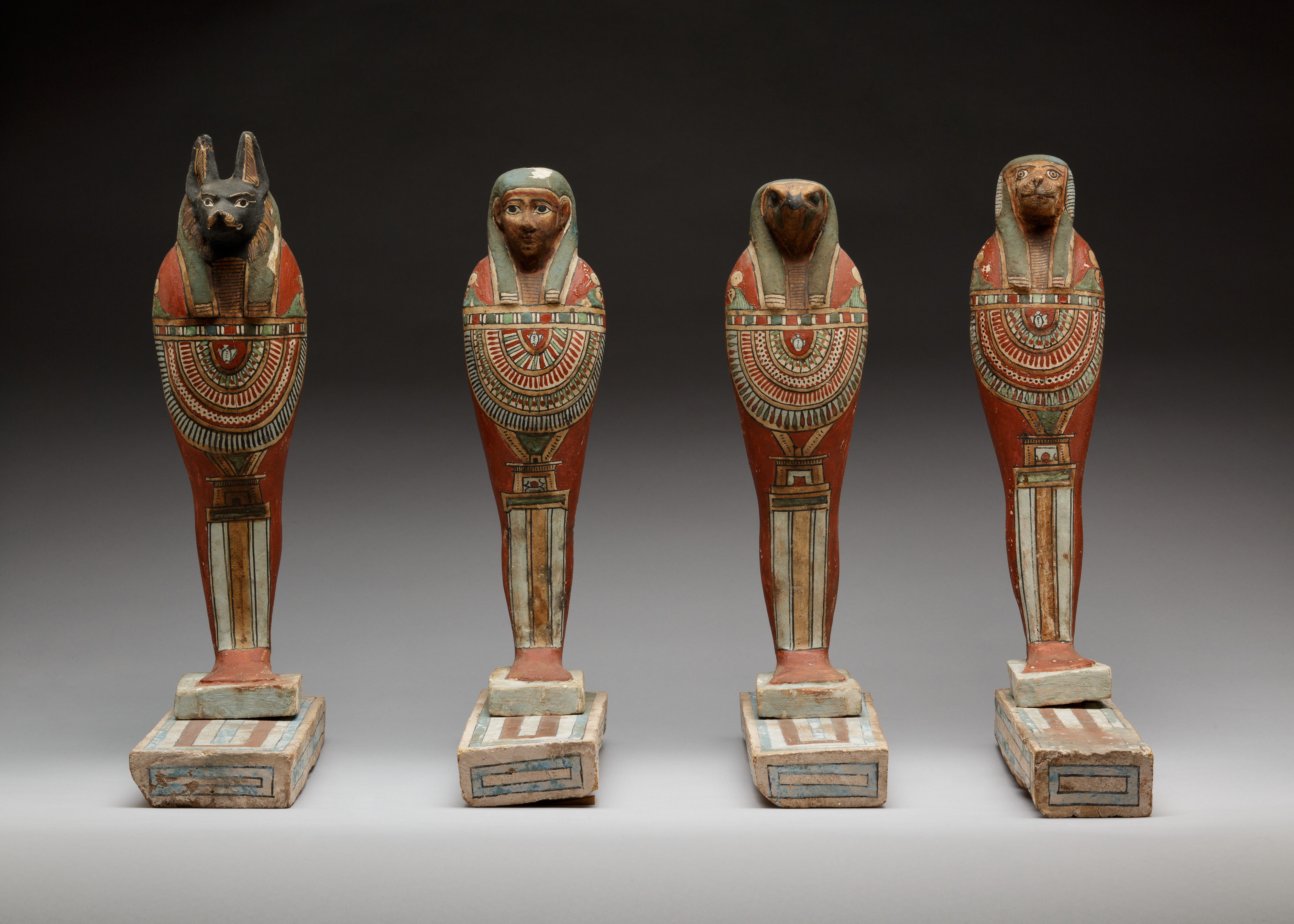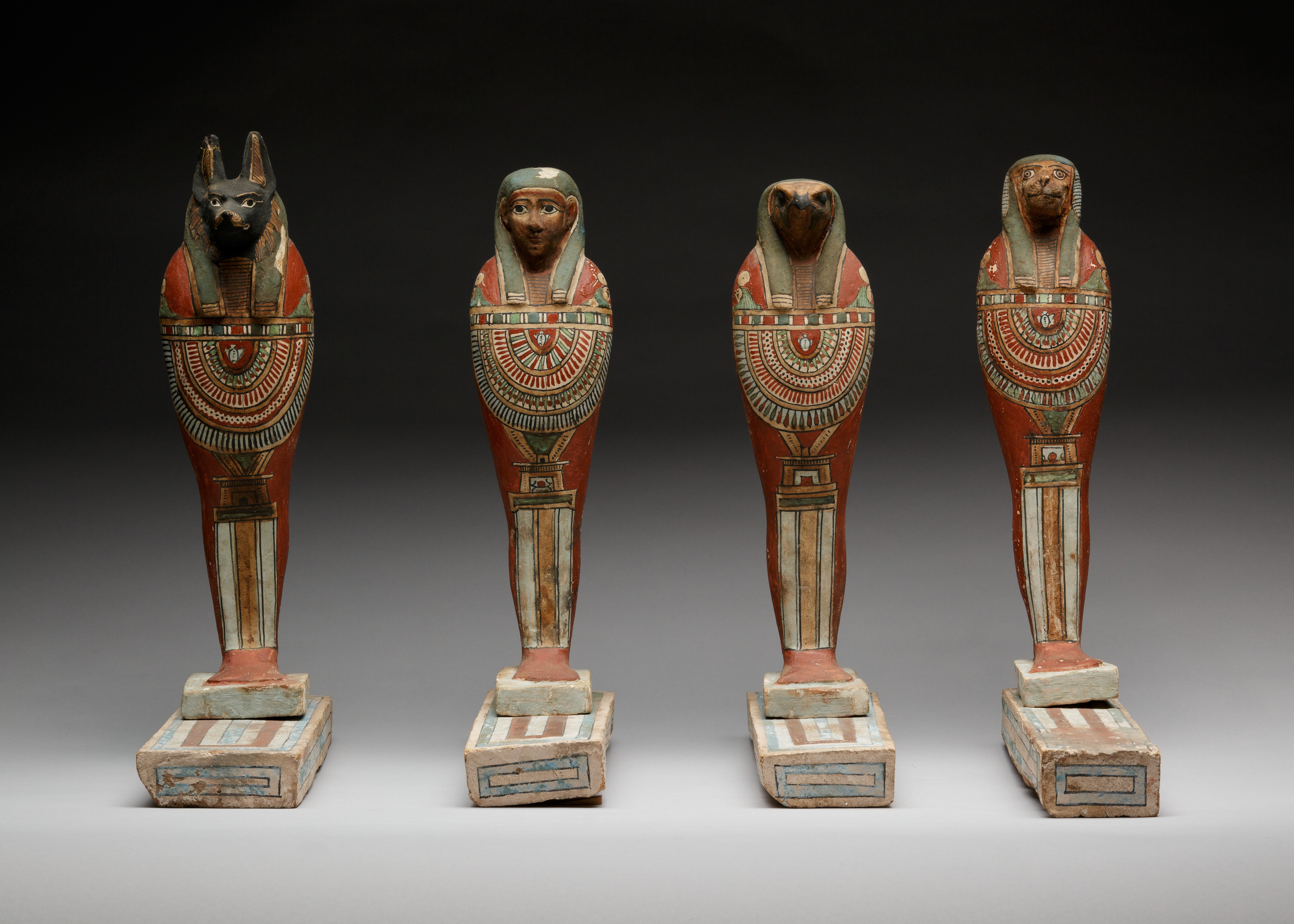Funerary Figure of Imseti
Late Period–Ptolemaic Period
This human-headed figure represents the god Imseti, who protected the liver. He is one of the four so-called sons of Horus that are often depicted as mummies, each with a different head (for the other three statuettes belonging to the same set, see 12.182.37a, c-d). The sons of Horus were deities who protected the internal organs and are probably best known from their representations on the lids of the canopic jars that contained mummified viscera. They were also thought to assist in the process of mummification and to provide nourishment, possibly because they were associated with the internal organs. Thus they had a general protective function for the deceased.
Imseti is wearing a broad collar with falcon head terminals, and a small heart amulet is depicted at the center of his chest. In addition a pectoral (a large pendant that is usually placed on the chest) is suspended from his neck, but depicted lower than usual, in the area above his knees. It features the depiction of a sun disk on a bark and is thus connected to the hope that the deceased would be reborn with the sun every morning.
This image cannot be enlarged, viewed at full screen, or downloaded.
This artwork is meant to be viewed from right to left. Scroll left to view more.




